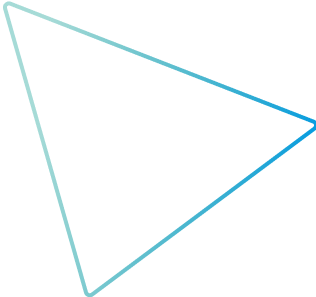She might be one of the most beautiful girls of the Netherlands. Or maybe even in the world. The Girl with a Pearl Earring, painted by Johannes Vermeer in 1665 is well known across the world. For a special project by the Mauritshuis Museum in The Hague, Canon Production Printing contributed to give this true Dutch masterpiece new dimensions through its unique elevated printing technology.
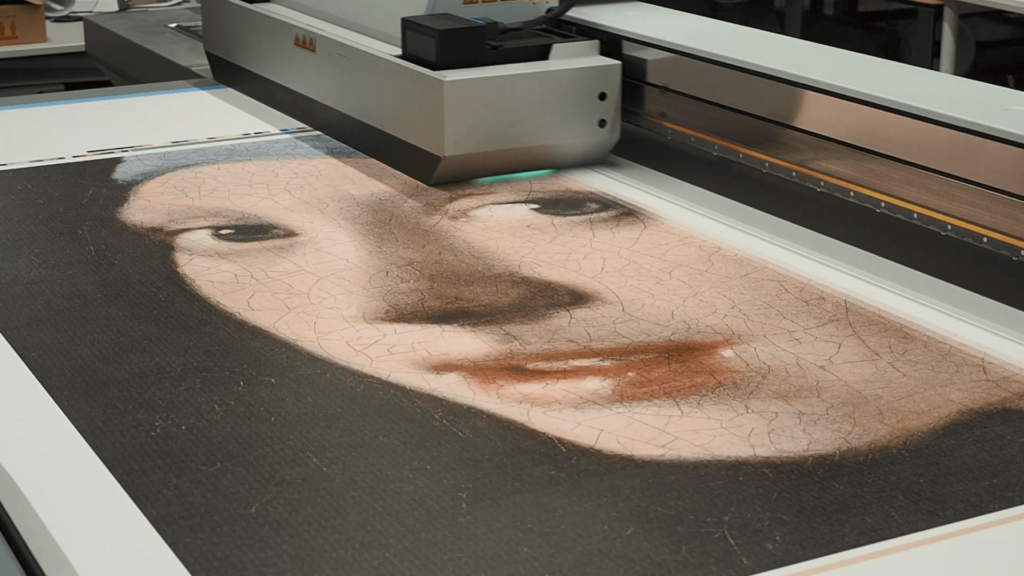
Clemens Weijkamp, Domain Architect at R&D, explains: “We have a long-standing cooperation with the museum and worked on several research projects. December 2020 Infocus Magazine published an article about a gigantic 3D digital scan of the painting. That inspired me to print an enlarged detail of the Girl-painting as elevated print and send this as a New Years greeting card to my contact at the Mauritshuis: Abbie Vandivere, restorer and project lead. A few weeks later she called to ask if Canon was interested to participate in an unique project.”
Cookies must be enabled in order to see videos
About the project
Over the years, the Girl with a Pearl Earring attracted many viewers with her impressive appearance. The Mauritshuis conducted several extensive researches to find out how the painting was originally created, which ingredients were used and how time had possibly changed the painting in 358 years.
Hirox Europe made an enormous 10 billion pixels 3D digital scan of the painting. In cooperation with the TU Delft the colours were investigated in detail. The scan provided new insights which nobody knew before: researchers were able to see the painting pigments or even brush hairs. Together with AkZo Nobel the Mauritshuis could trace at least 10 different pigments that Johannes Vermeer used. Did you know that the Girl’s headscarf contains the expensive blue pigment ultramarine? It was made from lapis lazuli: a gemstone from the Kokcha River valley in Afghanistan.
Canon Production Printing brought ‘our Girl’ to live using the unique elevated printing technology. At the presentation in the museum foyer, visitors can touch and feel a gigantic 4 x 3 metres version of the painting. As well as 4 close-ups of 1 by 1 meter of the left eye, mouth, swirl and of course: the pearl earring. How were those prints, with a print height up to 8mm, created?

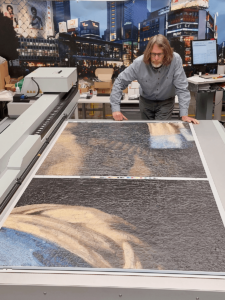
Preparing the job
“The original 3D scan we received was very impressive, and big! The New Years card was enlarged 10 times the original size. The size that was printed for the presentation was scaled 100 times bigger. Very challenging indeed. If we would print that original print file on the Arizona series, it would take us 600 hours print time using 168 litres of ink. That would provide a print with a height of 22 millimetre. It would have been very impressive, however that wasn’t realistic. With our R&D experience we started to create a near-perfect reproduction. Indeed, in a large format graphic size.” says Clemens.
“Once you’re into it, the Girl never lets you go. So, we started to think in scenario’s: What end results can we achieve? How can we shift our boundaries? How can we find alternatives in case some tests don’t succeed? It really triggered our creativity and our knowledge to create new dimensions.” he adds.
“The first priority was to proof the variety of colours of the painting. The research by the museum showed that the original colours changed overtime. To realize a realistic and high quality print, Clemens created 11 samples, each from different areas of the painting. Each sample was prepared with 11 different colour settings and send to the Mauritshuis for feedback. The results were used to create the optimal version of the Girl with the Pearl Earring.”
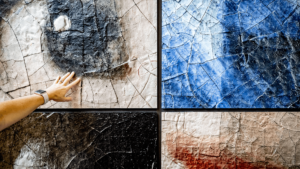
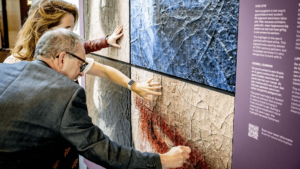
Print…
Before we could print, we prepared the image using the PRISMAelevate XL workflow software to build a height map of the image and create a ready to use print file. Of course, we used our R&D knowledge to push the boundaries a bit more than our customers can. This was a very useful experience which we can also use in future product developments. We decided to divide the painting into 12 smaller panels, which was more convenient in transport and would avoid waste, just in case something would go wrong.” Clemens added.
The prints were created at the Customer Experience Center in Venlo. Together with Camiel Rejhons it took 10 days of 23 hours printing per day. This print job pushed the limits of the Arizona flatbed series says Clemens: “Like we said we started to think in scenario’s. But the Arizona printer again confirmed to be a true workhorse. It printed day and night! We didn’t have any printing error or failure. We are still very impressed.”
And proud: during the presentation on June 8 Clemens and Camiel had time to see the print in real life and enjoy it to the fullest. Visitors are exposed to touch and feel this Dutch masterpiece. The experience is almost like stepping into the painting and go 358 years back in time.
The unique prints are on display in the foyer of the Mauritshuis Museum in The Hague. The presentation Who’s that Girl? is freely accessible for all visitors to enjoy until 7 January 2024.
More information available here.
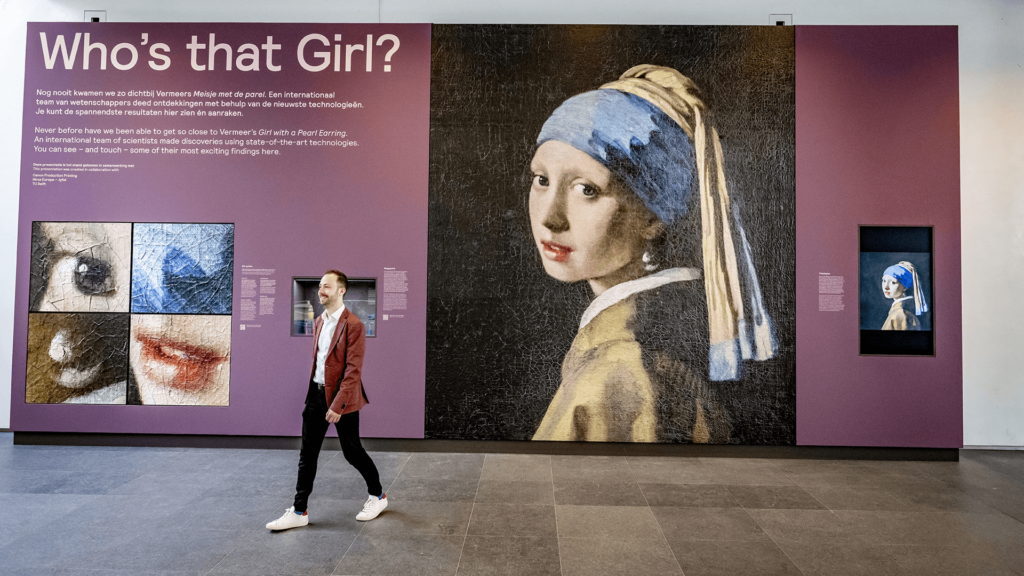
What is elevated printing?
Elevated printing technology allows the creation of full colour textured and tactile prints. The print job is prepared using PRISMAelevate XL software which translates an image into a highly accurate 3D design that can be printed on the award-winning Arizona flatbed printer series first-time-right. Using the unique UV-curable inks the Arizona prints layer upon layer and produces a high-resolution three-dimensional surface on the rigid media of choice.
Canon is a true technology innovator of this unique application offering in digital printing. Back in the years of Océ Technologies, this printing technology found its birth via the Eiger project. Meanwhile it found it first commercial successes. Customers can add a wide range of print applications that stand out such as high-value décor material, package prototyping and disability signage, braille and high-quality tactile art reproductions.

